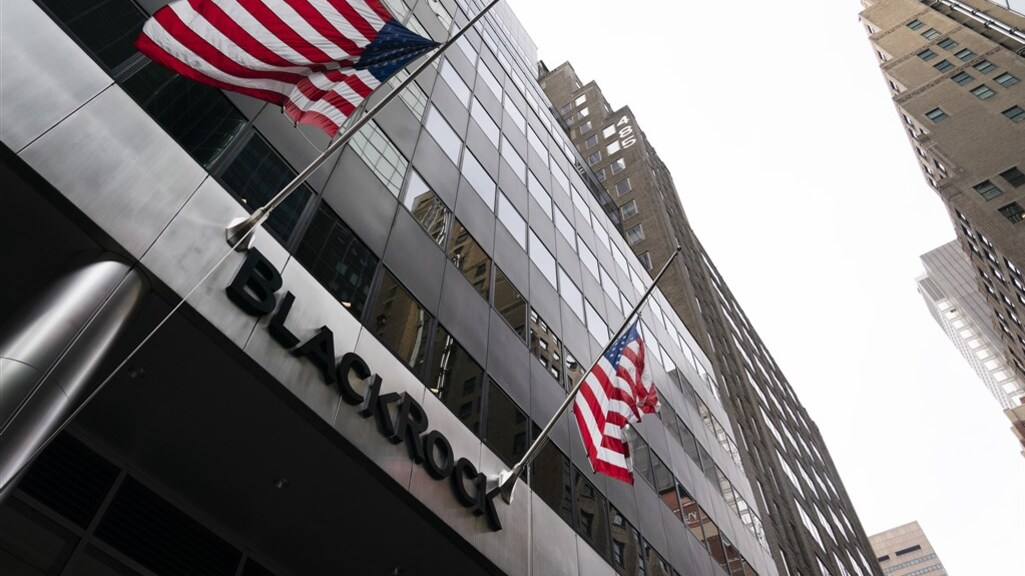When thinking about BlackRock, only few people think of the company as an vendor of IT services. However, since the start of the 2000s, Blackrock has been selling their risk and portfolio analysis and tracking tool Aladdin to other fund managers, including some of their largest competitors such as Vanguard and State Street (3). Since 2013 the amount of assets handled on BlackRock Aladdin (acronym of Asset, Liability, Debt and Derivative Investment Network) has increased from $11 trillion to over $21 trillion, serving more than 900 clients (2,3).
In the early days of Aladdin, BlackRock was very decisive to gain insights in through their risk capability tools and to understand their assets, portfolios and industry benchmarks. As other firms noticed BlackRock’s steady performance, Aladdin started to get sold to other firms (4). Nowadays, Aladdin is steadily expanding as the most used tool in the asset management industry, resulting in a strange market position, where Aladdin is not only competitor but also the most crucial vendor to their competitors.
This leaves us with the question: why is this part of BlackRock’s strategy and why don’t they focus on their core activity: investing itself. Although I did not ask Larry Fink, the answer is probably enclosed in the lucrativeness of the contracts with the customers, the early joiner benefits of BlackRock and the nature of the system – a system developed for and within the largest and most successful asset management firm, is probably difficult to beat by an outsider.
The market position of BlackRock has been analyzed by advisors of Biden, according to the FT (1). Like in other industries such as the mobile provider market, there are concerns that having all crucial IT infrastructure in hands of the market leader may be risky and lead to conflicts of interest. As a result, the government should decide: is it risky if all IT infrastructure within a market, is owned and sold by the market leader? And is this risk limited to financial markets only, or can this risk arise in other markets as well?
References
(1) https://www.ft.com/content/524a1fef-7bcd-4c2a-8e91-a2e7124c13e3
(2) https://fortune.com/2014/07/07/blackrock-larry-fink/
(4) https://www.clara-durodie.com/post/aladdin-and-the-genius-that-is-larry-fink



Interesting topic, I have never heard that Blackrock and other fund managers use the same analysis tool. And with risks, you mean like the critical infrastructure and what if it fails or?
I see an even more significant risk. If all fund managers use the same analytics tool to value companies, they would have some sort of consensus regarding valuation in the broader market and will decrease market forces. Furthermore, companies that are valued highly by their tool could be valued extremely high, while it may not be such a great company after all. Also, some bias in the tool would be used by the whole market. I can see some stocks being artificially pumped up to a high market cap because of this.
Do you see the same?
Thanks for your reply. I think the main risk that this situation triggers is: how big is the risk if a company that is already so powerful (BlackRock’s 10 trillion AUM basically means they are amongst the largest stakeholder of ALL listed companies in the US), is also gaining so much power on the other side of the table. I find it difficult to exactly point the finger to the risks involved, but your thinking is certainly on the right track.
On the risk you mentioned, I think you are right – this may exactly be the case – although different companies could have different interpretations of similar data, and different inputs may be fed to Aladdin, this may certainly lead to an ‘Aladdin bias’ to give it a name. 😉 And we all know what a market-broad bias can lead to, this was also the main cause of the 2008 crisis.
However, is this a problem? Maybe temporarily – although this will be the same cat-mouse game as ever happening in the financial markets, i.e. if part of the market systematically overvalues some equity, the other parts of the market will benefit. And this will result in the non-Aladdin fund managers outperforming the benchmarks, which will on itself not be sustainable in a paradigm where BlackRock / Aladdin are amongst the best performing asset managers / asset management tools.
P.S. The ‘Aladdin bias’ as you described would be a nice research topic, too bad that there is very little information publicly available on Aladdin’s clients. From googling, it is even unclear if the largest asset managers in the world such as Vanguard are using Aladdin – and even IF it’s known, we don’t know which fund management and operations are performed Aladdin and which ones outside of the system.
Very interesting post Nino! Indeed, one would not expect a company like BlackRock to be an IT service Vendor. Most companies would see the development of a risk and portfolio analysis application as an expense instead of an opportunity to generate income. This shows why BlackRock has become the asset management giant they are today.
However, I recognize your point about that strange position this puts BlackRock’s clients in, as the company is a competitor and the most important IT vendor at the same time. Besides the position of conflicting interests it creates in the Asset Management industry, I would be interested in understanding how BlackRock evaluates the competitive advantage they can gain from proprietary software against the monetary benefits of offering software to IT clients. Do you expect them to keep some of the “ingredients” to their “secret sauce” to themselves by offering a lesser version to clients, or is everything for sale if the price is right?